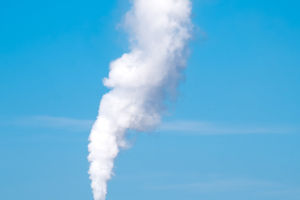If you've ever watched a rainstorm pass, you might have wondered where the water comes from and where it goes afterward.
It's all part of a bigger process known as the global water cycle—a continuous loop that moves water from the surface to the atmosphere and back again.
This cycle not only helps replenish our water resources but also plays a huge role in shaping our climate. Understanding how the water cycle works can help us better appreciate its connection to the environment and the weather patterns we experience daily.
The Water Cycle: A Constant Flow
At its simplest, the water cycle is the process through which water moves around Earth. It involves four main stages: evaporation, condensation, precipitation, and collection.
1. Evaporation: Water from oceans, lakes, rivers, and even plants (through transpiration) rises into the atmosphere as vapor due to the heat from the sun. This process is crucial because it moves water from Earth's surface into the air.
2. Condensation: As the water vapor rises, it cools and turns back into liquid droplets, forming clouds. This step is essential for the formation of weather systems, as clouds are responsible for holding water until it's ready to fall as rain or snow.
3. Precipitation: Once the clouds can no longer hold the moisture, it falls back to Earth as precipitation—rain, snow, sleet, or hail. This is when we see the tangible effects of the water cycle, from a gentle shower to a heavy storm.
4. Collection: Water that falls back to Earth collects in oceans, rivers, lakes, and underground aquifers, ready to evaporate again and continue the cycle.
Example: In tropical regions, the constant evaporation of ocean water feeds the atmosphere, where it cools and condenses into heavy rain. This is why rainforests experience such frequent downpours—they're essentially in the heart of the water cycle.
Water and Climate: An Inseparable Link
The water cycle doesn't just transport water—it helps regulate temperature and weather patterns. Through evaporation, large bodies of water like oceans and lakes play a key role in controlling the Earth's temperature. When water evaporates, it absorbs heat, which helps cool the surrounding environment. This is why coastal areas tend to have milder climates compared to inland regions.
Example: During the summer, oceans can absorb a large amount of heat from the sun. When this warm, moist air rises and condenses, it releases latent heat, which can influence the formation of weather systems, like storms or monsoons. This constant exchange of heat and moisture helps stabilize the planet's climate.
Water also impacts local weather. Areas that receive more precipitation tend to have cooler temperatures, as rain can lower the temperature by cooling the air. Meanwhile, regions that don't get much rain can experience hotter conditions. Understanding how water moves in and out of the atmosphere can explain a lot about the weather we experience on any given day.
The Role of Water in Water Resources
The water cycle is vital for replenishing fresh water, which is essential for life. While most of Earth's water is saltwater, only about 2.5% is freshwater—and of that, much is locked away in ice caps or underground. The rest, the accessible portion, comes from rivers, lakes, and aquifers, and it's what we rely on for drinking, agriculture, and industry.
However, water distribution is uneven across the planet. Some areas experience more evaporation and precipitation, while others suffer from droughts. This can lead to water scarcity, especially in regions where the water cycle is disrupted by climate change or other factors like deforestation.
Example: Areas in the Middle East, for instance, are dry and receive little precipitation. In contrast, places like the Amazon rainforest receive constant rainfall, keeping the water cycle healthy. But with rising temperatures and changes in rainfall patterns, these regions may face water shortages, which can have serious consequences for local communities.
The Impact of Climate Change on the Water Cycle
Climate change is disrupting the natural water cycle in ways that affect both the availability and quality of water resources. As temperatures rise, more water evaporates from oceans, lakes, and rivers. This can lead to heavier rainfall in some areas, which may cause flooding, while other areas may experience more intense droughts.
Additionally, higher temperatures are causing glaciers to melt faster, contributing to rising sea levels. This not only affects coastal communities but also impacts freshwater systems that rely on glacier-fed rivers.
Example: In regions like California, the combination of increased evaporation and less snowpack in the mountains has led to water shortages during the summer months. The snowpack in mountain regions traditionally serves as a natural reservoir, releasing water slowly throughout the year. However, with warmer winters, less snow is accumulating, causing a gap in water supply.
Protecting Water Resources for the Future
The global water cycle will continue, but human activities have the potential to interfere with its balance. Pollution, over-extraction of water, and deforestation are all contributing factors that are altering how water moves through the environment. Protecting our water resources and ensuring that they remain available for future generations requires a collective effort to minimize our environmental impact.
One way to do this is by improving water management practices—conserving water, reducing waste, and finding innovative ways to capture and store water. Individuals can also play a role by conserving water at home and supporting policies that promote sustainable water use.
Example: Cities in arid regions, like Dubai, have implemented advanced desalination technology to convert seawater into freshwater. While this is a valuable innovation, it requires a lot of energy and resources. More sustainable approaches, such as rainwater harvesting, are also becoming more popular.
As we learn more about the water cycle and its connection to climate, we gain a deeper understanding of how fragile our water systems are. But with the right actions, we can help preserve and protect this vital resource for future generations.


